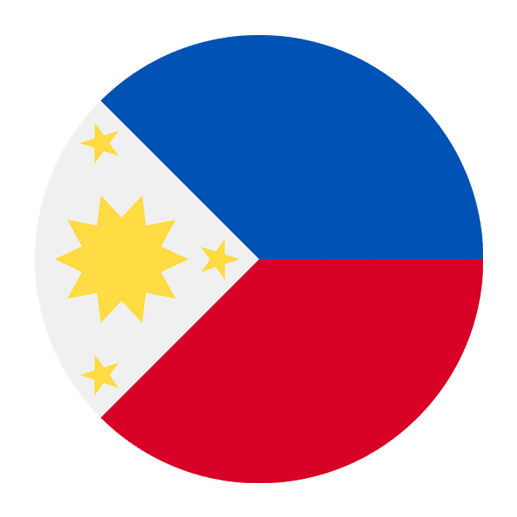Learning a new language can be an exciting yet challenging endeavor, and Tagalog is no exception. As the national language of the Philippines, Tagalog opens doors to understanding a rich cultural tapestry and connecting with millions of speakers worldwide. Fortunately, in the age of technology, there are numerous web applications powered by Artificial Intelligence (AI) that make learning Tagalog more accessible and engaging. Here, we’ll explore eight of the best AI-driven web apps to help you master Tagalog effectively.
Talkpal
Talkpal is a standout among AI language learning tools, and for good reason. It offers a comprehensive approach to mastering Tagalog through several innovative features.
Conversation Practice: One of Talkpal’s core strengths is its conversation practice feature. Using advanced AI, Talkpal simulates real-life conversations with native speakers. You can practice speaking Tagalog in a variety of contexts, from casual chats to more formal discussions, helping you gain confidence and fluency.
Personalized Learning Path: Talkpal uses machine learning algorithms to create a personalized learning path for each user. It assesses your proficiency level and learning style, then tailors lessons and practice sessions to match your needs. This ensures that you are always challenged but not overwhelmed.
Instant Feedback: Immediate feedback is crucial when learning a new language. Talkpal’s AI provides instant corrections and suggestions during your practice sessions, allowing you to learn from your mistakes in real time. This feature is particularly beneficial for honing your pronunciation and grammar.
Cultural Insights: Language learning is not just about words and grammar; it’s also about understanding culture. Talkpal incorporates cultural insights into its lessons, helping you understand the context in which certain phrases are used. This holistic approach makes your learning experience richer and more meaningful.
Rosetta Stone
Rosetta Stone has been a trusted name in language learning for decades, and its AI-driven Tagalog program is no exception. The app employs a natural immersion approach, allowing you to learn Tagalog as if you were a child acquiring your first language.
Immersive Learning: Rosetta Stone’s methodology focuses on using images, audio, and text to teach vocabulary and grammar in context. This immersive approach helps you think in Tagalog rather than translating from English, which is key to achieving fluency.
Speech Recognition: The app’s TruAccent speech recognition technology is highly accurate and helps you improve your pronunciation by comparing your speech to native speakers. This feature is invaluable for mastering the nuances of Tagalog phonetics.
Consistent Practice: Rosetta Stone emphasizes consistent practice with its “Extended Learning” features, including phrasebooks, stories, and audio companions. These tools allow you to reinforce your learning even when you’re on the go.
Duolingo
Duolingo is another popular language learning app that has incorporated AI to enhance its effectiveness. While it offers a more gamified approach, it’s a powerful tool for learning Tagalog.
Gamified Lessons: Duolingo turns language learning into a game, with points, levels, and rewards to keep you motivated. The short, bite-sized lessons are easy to fit into a busy schedule, making it perfect for learners of all ages.
Adaptive Learning: Duolingo uses AI to adapt its lessons to your learning pace. If you’re struggling with a particular concept, the app will provide additional practice until you’ve mastered it. Conversely, if you’re excelling, it will introduce more challenging material to keep you engaged.
Community Support: Duolingo’s forums and user community provide additional support and resources. You can ask questions, share tips, and even practice with other learners, creating a collaborative learning environment.
Babbel
Babbel is renowned for its practical approach to language learning, and its Tagalog course is no different. By integrating AI, Babbel ensures that you get the most out of every lesson.
Real-Life Dialogues: Babbel focuses on teaching you phrases and sentences that you’re likely to use in real-life situations. This practical approach ensures that you’re learning useful language skills that you can apply immediately.
Interactive Lessons: The app’s interactive lessons are designed to keep you engaged. They include a mix of listening, speaking, reading, and writing exercises, providing a well-rounded learning experience.
Review Manager: Babbel’s AI-powered Review Manager keeps track of your progress and helps reinforce your learning by scheduling reviews at optimal intervals. This spaced repetition technique is proven to improve retention.
Memrise
Memrise combines AI with user-generated content to create a dynamic language learning experience. Its Tagalog course is designed to be both fun and effective.
Visual Learning: Memrise uses a variety of visual aids, including videos of native speakers, to help you learn new words and phrases. This multisensory approach makes it easier to remember and recall information.
Adaptive Learning: The app’s AI adapts to your learning style and pace, ensuring that you’re always progressing. It tracks your performance and adjusts the difficulty of lessons accordingly.
Community Content: One of Memrise’s unique features is its user-generated content. You can access a wealth of additional resources created by other learners, providing diverse perspectives and learning materials.
Lingvist
Lingvist uses AI to accelerate your language learning by focusing on the most relevant vocabulary and grammar. Its Tagalog course is designed to help you achieve fluency quickly.
Personalized Vocabulary: Lingvist’s AI analyzes your learning progress and focuses on teaching you the vocabulary that you need most. This personalized approach ensures that you’re learning words and phrases that are relevant to you.
Data-Driven Insights: The app provides detailed insights into your learning progress, showing you how many words you’ve learned, your proficiency level, and areas that need improvement. This data-driven approach helps you stay on track and motivated.
Real-World Context: Lingvist’s lessons are based on real-world contexts, helping you understand how to use new vocabulary and grammar in everyday situations. This practical approach makes it easier to apply what you’ve learned.
Busuu
Busuu offers a comprehensive Tagalog course that combines AI with human interaction to enhance your learning experience.
AI-Powered Lessons: Busuu’s AI-powered lessons are designed to be engaging and effective. They include a mix of listening, speaking, reading, and writing exercises, providing a well-rounded learning experience.
Human Interaction: One of Busuu’s standout features is its community of native speakers. You can practice speaking Tagalog with native speakers through the app’s conversation feature, receiving feedback and corrections in real-time.
Personalized Study Plan: Busuu creates a personalized study plan based on your goals and proficiency level. The app tracks your progress and adjusts your study plan as needed to ensure that you’re always moving forward.
FluentU
FluentU takes a unique approach to language learning by using real-world videos to teach Tagalog. Its AI-powered platform makes learning engaging and effective.
Real-World Videos: FluentU uses videos from various sources, including movies, TV shows, music videos, and news clips, to teach Tagalog. This immersive approach helps you understand how the language is used in different contexts.
Interactive Transcripts: Each video comes with interactive transcripts and subtitles, allowing you to follow along and learn new vocabulary and grammar in context. You can click on any word to see its definition and usage examples.
Personalized Learning Path: FluentU’s AI creates a personalized learning path based on your interests and proficiency level. The app tracks your progress and recommends videos and exercises that match your learning needs.
Conclusion
Incorporating AI into language learning has revolutionized the way we approach mastering a new language. Whether you’re a beginner or looking to refine your Tagalog skills, these eight web apps offer a range of features to suit your needs. From Talkpal’s personalized conversation practice to FluentU’s real-world video lessons, each app provides unique tools to help you achieve fluency. With consistent practice and the right resources, learning Tagalog can be an enjoyable and rewarding journey.

